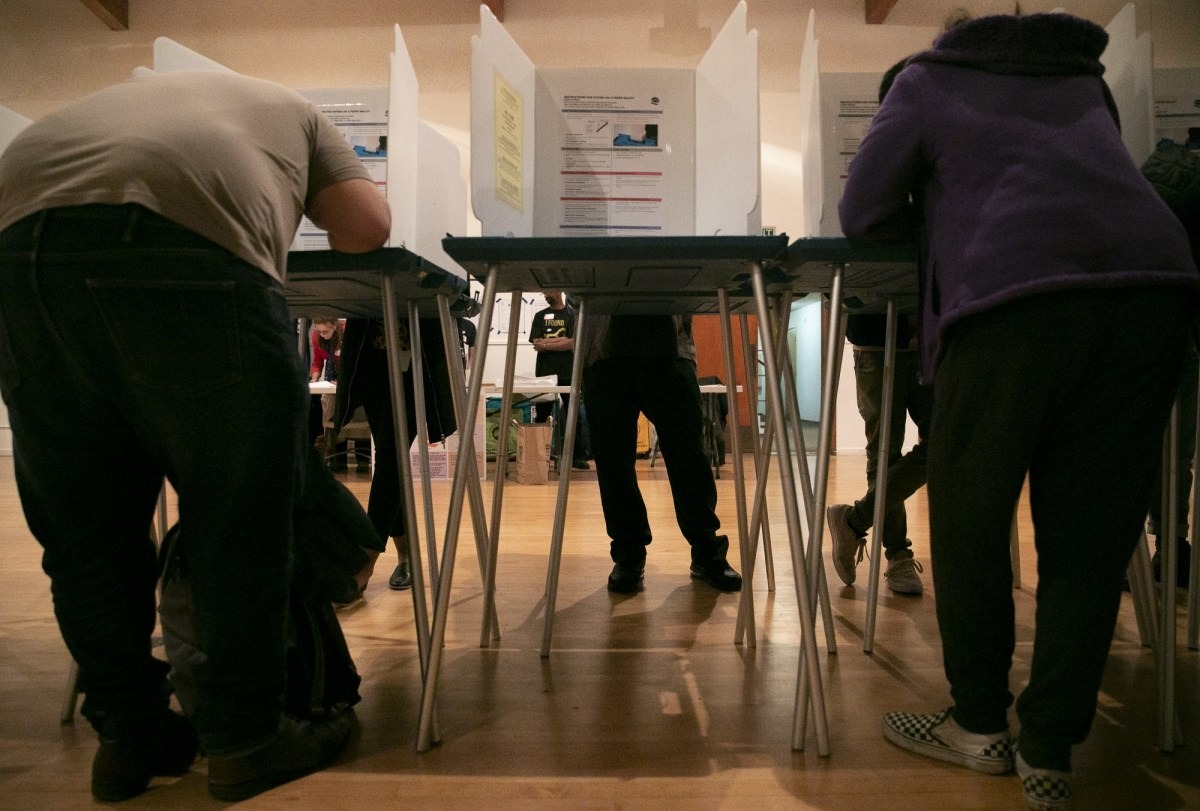Pens, PPE, Police: Preparing for In-Person Voting

Voters at BeeBee Memorial Christian Methodist church in Oakland on Super Tuesday 2020. Photo by Anne Wernikoff for CalMatters
OCTOBER 26, 2020
It was a succinct appraisal of the state of mind of county election officials grappling with the new normal of voting in the year of a pandemic, disinformation and threats of voter intimidation. Across California, officials have been training workers at polling places and vote centers in new protocols, acquiring equipment to protect voters and staff, and preparing, however unlikely, for confrontation.

Anyone who votes in person — or works at a polling place — will notice big differences from the last election. Voters will be offered masks, as mandated by the state. They’ll even be provided with their own pen, to reduce the risk of contamination. Every voter will be required to stay six feet away from others.
There are separate protocols in place for voters who enter polling stations without a mask.
Under guidelines issued to the state’s 58 counties by the Secretary of State, “voters must still be allowed to exercise their right to vote regardless of face covering or distancing compliance,” so election workers will have to arrange additional distance between the unmasked voter and others in the polling place.
Such modifications don’t come cheap: California’s budget carved out $111.6 million in federal and state funds to address the impact of COVID-19 on election administration this year.
Registrars have been training their poll workers on maintaining social distance and other concerns, through a mix of online and in-person instruction.
During previous election years, poll workers in Alameda County gathered in person and prepared to work each position at a polling site. For this election, poll workers were assigned to specific posts split up by position and attended either hybrid or fully online training.
For the primary in March, “you were learning how to set up the electronic voting option, you actually set it up,” recalled Stephen Saxon, 60, who is working at a site in Hayward as a clerk.
“That’s not happening this time, except for captains and judges.”
The hands-off training isn’t the only source of anxiety. Polling sites in Alameda County are open from Oct. 31 through Nov. 3, and poll workers are anticipating four long days of work that includes exposure to lots of voters. “To spend 46 hours in the thick of it, is not a zero risk,” said Saxon.
Security is also an unwonted concern. Earlier this month, the Secretary of State’s office sent guidance memos on handling intimidation and disruption at the polls, as well as potential “unauthorized challenges to voters” by election day observers, to every registrar in California.
In Sacramento County, a video tutorial used to train election officers includes tips on dealing with “difficult voters,” urging local officials to involve multiple workers in interactions with confrontational voters if possible and to have a plan for calling law enforcement if necessary.
The tutorial advises election officials to stay calm, clarify the situation and ask the voter how they would like to be assisted. Election officials should not feel pressured to take any action beyond their authority or the law, the tutorial says, and can offer difficult voters a card with the elections office’s number to redirect their complaints.
Bailey-Kanelos, Sacramento’s registrar, says she has maintained more constant contact with law enforcement officials than in any past election season, even compiling a reference guide on election-related criminal provisions that she’s provided to police departments and the county sheriff.
Under California’s elections code, intimidating voters, carrying a gun in close proximity to a vote center, and lingering outside a vote center in uniform — either as a police officer or a private security guard — are felonies. So is tampering with the voting system. Electioneering with signs, clothing or speech within one hundred feet of a vote center is a misdemeanor.
So far, vote centers in Sacramento County have seen “no major disruptions,” Bailey-Kanelos reported.
Aaron Leathley and Zachary Fletcher are reporters at UC Berkeley’s Graduate School of Journalism.




